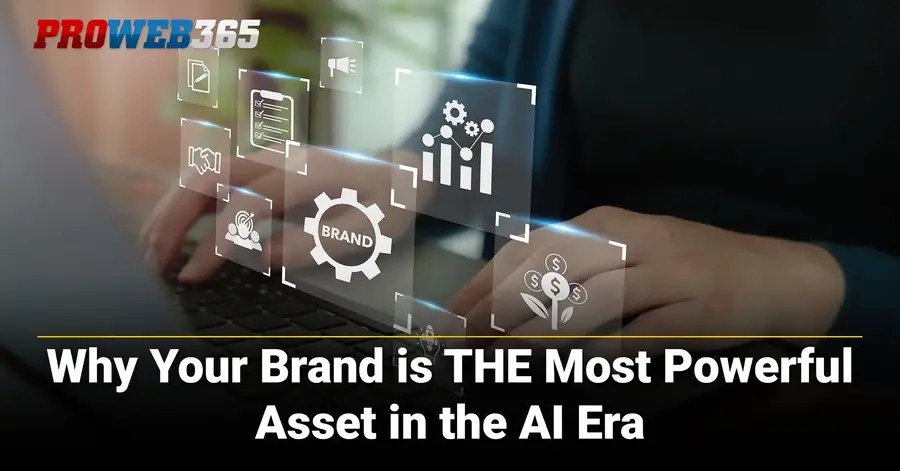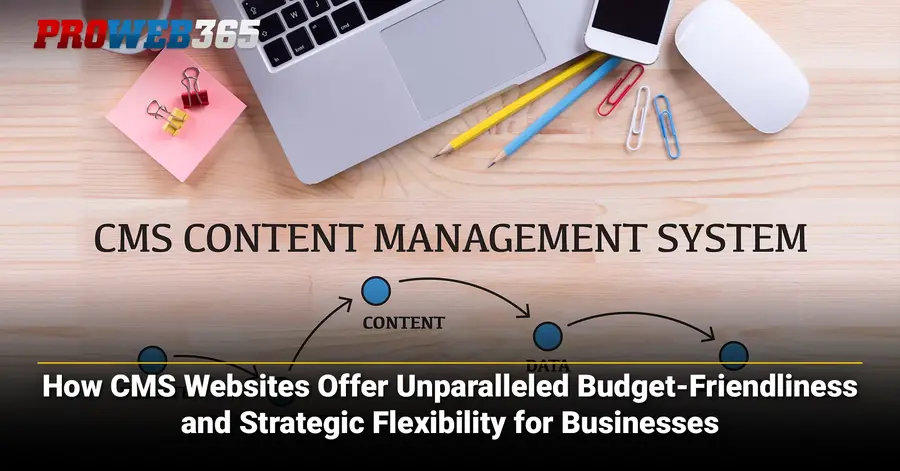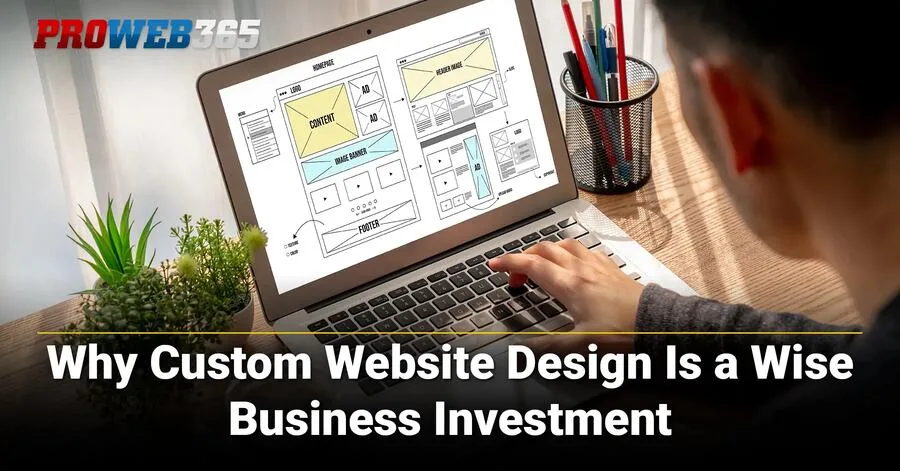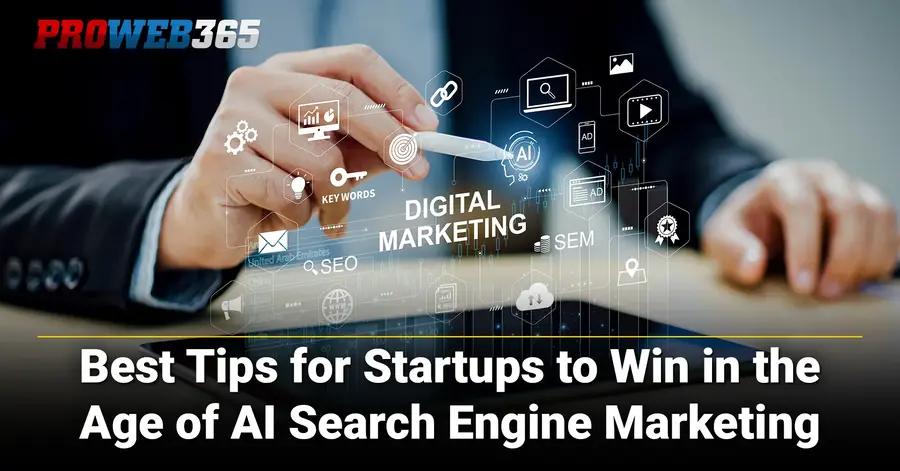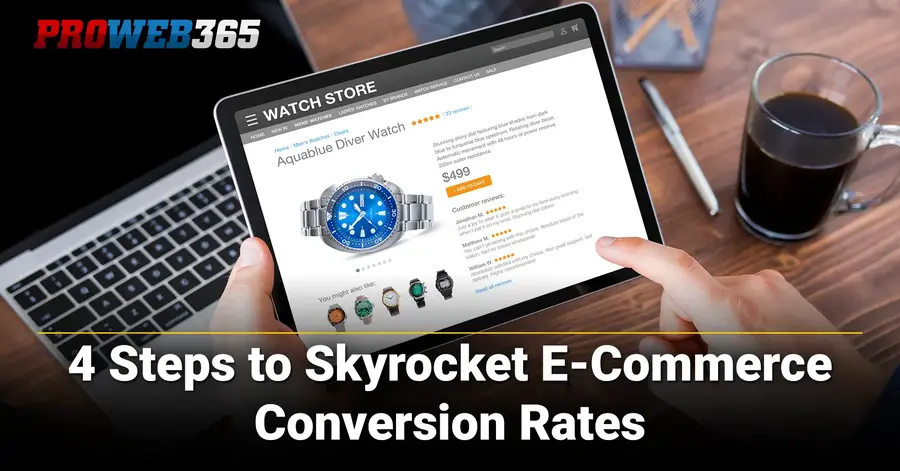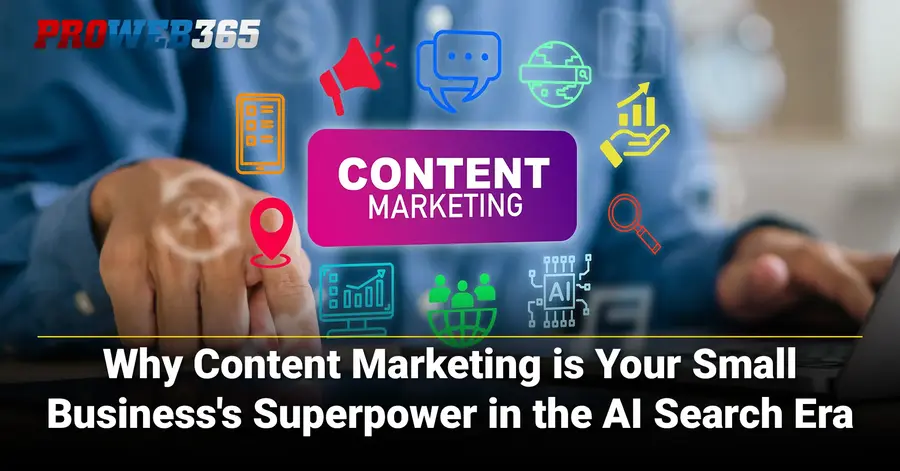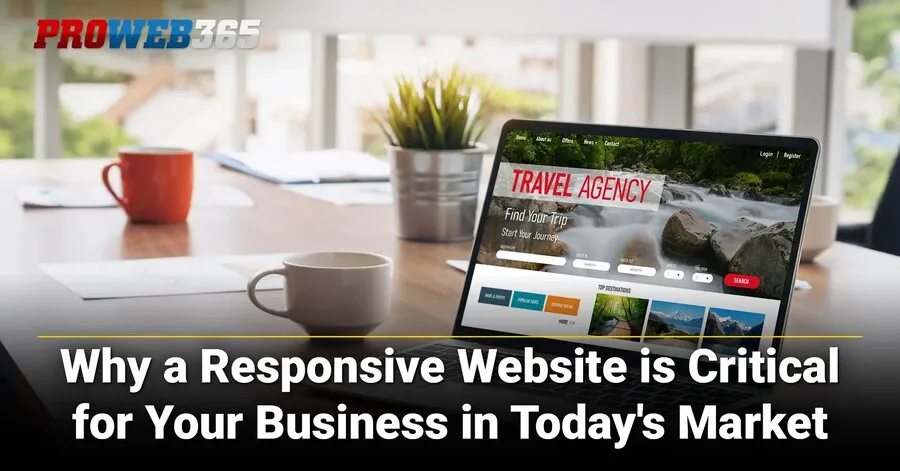A Guide to Finding a Good Online Marketing Agency

To build a commanding online presence, especially as a mid-size business or organization, a variety of factors need to come together and be executed effectively. Understanding your audience and connecting with them requires a high-performing website and a trusted SEO/GEO partner working synergistically. Selecting optimal tools, optimizing your site, and rigorously vetting partners, you can achieve sustainable growth and maximize return on digital investments.
Key Takeaway: To achieve online success, businesses and organizations should:
- Plan Strategically: Establish clear SMART goals to ensure efficient investment allocation. Monitor your target audience through detailed buyer personas and performance data to keep messaging highly relevant and effective.
- Invest in a High-Performing Website: Hold your website to high standards and treat it as it is: a powerful sales and trust-building instrument. Prioritize custom design for unique brand differentiation. Adopt a mobile-first design for optimal UX and SEO/GEO performance. Focus on intuitive user experience, clean code architecture, fast loading speeds (Core Web Vitals), and robust technical SEO/GEO foundation. Commit to ongoing maintenance and utilize GA4 for data-driven optimization decisions.
- Carefully Choose SEO/GEO Partners: A qualified SEO provider is essential for sustained online visibility. Define specific SEO goals, seek relevant industry experience, and thoroughly review case studies and client references. Choose transparent agencies using ethical "white hat" SEO methodologies and offering completely customized solutions with detailed reporting. Be on the lookout for red flags like unrealistic promises or a lack of clear accountability. Ensure your contract grants complete ownership of the website and domain assets.
A Strategic Guide to Selecting a Great Website Designer
When you're a small to mid-size business owner or organizations, a website is more than just an online brochure; it's a foundational pillar for your identity, operations, and growth. In the AI era, a professional,...
The Digital Imperative for Small to Mid-Size Businesses
Today, an online presence is essential for small businesses to survive and thrive. A robust online footprint boosts visibility, strengthens brand recognition, and attracts qualified customers. A website will often serve as the first touchpoint, helping clients discover your offerings while establishing trust. Most consumers research extensively online before purchasing. Gone are the days when only having a website set up in 10 minutes was enough; it must be strategic and results-driven. A static site represents a missed opportunity. The real value lies in converting visitors into customers, managing brand perception, and generating qualified leads. This demands intentional design, compelling content, and seamless usability, transforming your website into a dynamic asset that delivers quantifiable results.
Setting SMART Goals for Online Success
Before launching any online marketing initiative, establish clear, actionable SMART goals: Specific, Measurable, Achievable, Relevant, and Time-bound.
- Specific: Focus on one precise target, e.g., "increase blog visitors," as opposed to "increase sales."
- Measurable: Track progress with concrete metrics, e.g., "increase blog visitors by 50%."
- Achievable: Goals must be realistic given your resources and budget constraints.
- Relevant: Goals should align with broader business objectives, e.g., "establish presence as an industry leader."
- Time-bound: Set definitive deadlines, e.g., "by July 2025."
For small to mid-size organizations, SMART goals mitigate risk. With constrained resources, vague objectives waste precious investment. The SMART framework allows for set budgets to be used optimally by targeting achievable outcomes, minimizing financial risk, and maximizing operational efficiency.
Why Your Brand is THE Most Powerful Asset in the AI Era
As AI begins to reshape browsing, so too is the digital landscape for small to mid-size businesses (SMBs). To go along with the tide, investing in brand strength is crucial for customer acquisition and sustainable...Part 1: Crafting Your Effective Online Marketing Strategy
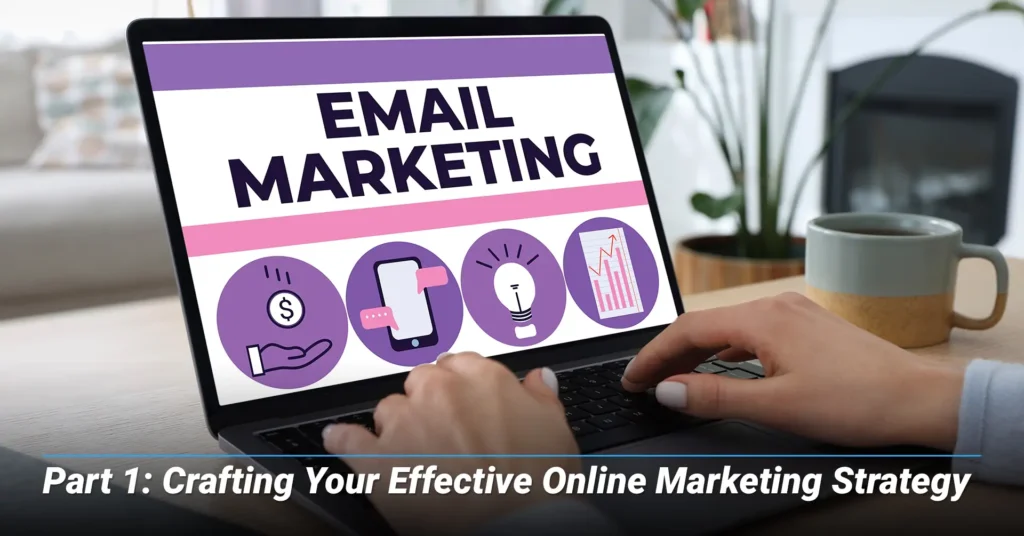
A. Understanding Your Audience: The Foundation of Marketing Success
Attempting to broadly market dilutes your message and wastes resources. Focus on your target audience or "best-fit customer" by developing detailed buyer personas— comprehensive profiles of these ideal clients. Include information such as demographics, values, pain points, and online behaviors. Gather data through surveys, interviews, sales team insights, and Google Analytics. Avoid "negative buyer personas" as they are not worth using funds to try to convert into sales. Understanding your audience is an ongoing process; regularly analyze performance data and customer feedback to adapt strategies and optimize resource allocation.
B. Core Digital Marketing Channels for Small to Mid-Size Businesses (SMBs)
Select digital marketing channels where your audience actively engages, and you can maintain a consistent presence. For small to mid-size businesses, focus on cost-effective options with proven ROI (return on investment). The table below outlines key channels, their objectives, advantages, disadvantages, and optimal applications, helping you align marketing investments with business goals and budget constraints for maximum return.
| Channel Name | Primary Goal | Pros | Cons | Best Use Case for SMBs |
|---|---|---|---|---|
| Content Marketing | Awareness, Education, Leads, Authority | Builds trust & credibility, long-term ROI, evergreen assets, cost-effective | Time-intensive creation, requires specialized expertise, results take time | Establishing thought leadership, attracting organic traffic, educating prospects |
| Social Media Marketing | Awareness, Engagement, Sales, Customer Service | Cost-effective, direct customer connection, brand building, viral potential | Requires consistent effort, engagement challenges, algorithm changes, high competition for paid ads | Community building, direct customer interaction, product discovery, targeted advertising |
| Email Marketing | Leads, Loyalty, Sales, Retention | Exceptional ROI ($36:$1), direct communication, personalization, automation capabilities | Requires list building, can be perceived as spam, needs compelling content | Nurturing leads, customer retention, promoting new products/services, targeted offers |
| Paid Advertising (PPC) | Immediate Visibility, Leads, Sales | Instant traffic, precise targeting, measurable results, budget control | A little high ongoing cost, requires continuous optimization, can be complex for beginners, risk of budget waste if unmanaged | Quick traffic boosts, promoting specific offers, testing new markets, competitive keyword targeting |
C. Content Marketing: Building Trust and Authority
Content marketing involves creating and distributing valuable online materials (blogs, videos, guides) to inform and solve audience problems. It's essential for SEO/GEO, lead generation, brand awareness, sales enablement, and customer loyalty. By delivering useful content throughout the buyer's journey, it organically attracts and guides potential customers. Though requiring upfront investment, content marketing builds "evergreen" assets that last in perpetuity, continuously attracting organic traffic and establishing industry expertise. These deliver exceptional long-term ROI for small to mid-size businesses by reducing dependence on constant advertising spend.
How CMS Websites Offer Budget-Friendliness and Strategic Flexibility for Businesses
Content Management Systems (CMS) empower small to mid-size businesses (SMBs) to build and grow their online presence affordably and efficiently. To better understand, a report on how CMS platforms offer cost-effectiveness and remarkable adaptability, enabling...D. Social Media Marketing: Connecting and Engaging Authentically
Social media marketing provides an affordable avenue for these businesses to connect with new clients, enhance brand awareness, and drive sales. Over half of global consumers discover new brands through social media platforms. Start with clear objectives, understand your audience deeply, analyze competitors, and choose platforms where your audience is most engaged (e.g., Facebook for purchasing decisions, Instagram and TikTok for discovery, LinkedIn for B2B relationships). Plan a content calendar strategically, seek authentic collaborations, and leverage analytics to adjust and adapt your approach. Today’s social media values genuine engagement over promotions. Success comes from authentic dialogue, sharing your brand story, and active community participation by building loyalty through relatable, interactive assets.
E. Email Marketing: Nurturing Relationships and Driving Sales
Email marketing promotes products, builds relationships, and enhances loyalty, delivering exceptional ROI (e.g., $36 for every $1 invested). Maximize effectiveness through:
- Segmentation & Personalization: Target specific groups with tailored messaging.
- Compelling Subject Lines: Create curiosity to increase open rates significantly.
- Clear CTAs: Guide desired actions with concise, prominent calls-to-action.
- Automated Campaigns: Deploy behavior-triggered emails (e.g., welcome, abandoned cart) to save time.
- Mobile-Optimized Emails: Ensure flawless display across all devices.
- Analytics & Optimization: Monitor key metrics (open rates, CTR, conversions) to refine strategies continuously.
Automation and personalization amplify email marketing's ROI by making it a scalable customer relationship management tool. This isn't about mass mailings but delivering relevant messages to specific audience segments at optimal moments, efficiently nurturing leads and driving conversions.
The Small Business Guide to Winning Customers Through AI Search Optimization
The internet is constantly evolving, and AI in search engines is being used to find business for customers. For small to mid-size business owners, understanding and adapting to these technological advances is crucial for growth....F. Paid Advertising (PPC): Accelerating Visibility
PPC (Pay-Per-Click) advertising means you pay each time someone clicks on your advertisement. The goal is to target keywords strategically, so the website visit's value exceeds the click cost. Benefits include immediate visibility, targeted reach, measurable results, budget control, and campaign flexibility. Unlike SEO/GEO, PPC delivers instant traffic without needing to produce a multitude of content. It operates on an auction model where bids, ad quality, and relevance determine placement priority. Key components include relevant keywords, compelling ad copy with clear CTAs, fast-loading landing pages, and intelligent bidding strategies. Popular platforms include Google Ads, Microsoft Advertising, and social media networks.
G. How AI is Transforming PPC
AI and machine learning automate routine tasks, enhance targeting precision, and adjust bids in real-time, optimizing ad placement for higher ROI. Smart Bidding utilizes AI to adjust bids based on conversion probability. Voice search, powered by AI, requires optimizing for conversational queries and natural language patterns.
PPC demands continuous, data-driven management to prevent budget waste. Active monitoring of CTR, CPC, conversion rate, and ROAS, plus proactive campaign adjustments, is crucial. Without diligent management, PPC can rapidly deplete marketing budgets with minimal returns.
H. Integrating Your Marketing Efforts for Maximum Impact
For maximum impact, it’s best to combine best digital marketing channels rather than operating them separately. Repurpose and repost content across multiple platforms (e.g., transform a blog post into social media clips or email newsletter content). Utilize tools like HubSpot Marketing Hub for email automation, Canva for visual design, and later for social media scheduling.
Additionally, implement analytics tools like Google Analytics (GA4) and Google Search Console to provide deep insights into website engagement and search performance, enabling data-driven optimization decisions. These are vital for understanding channel interactions, allocating resources effectively, and maximizing ROI. For small to mid-size businesses, leveraging these (often free or affordable) tools enables precise, data-driven decisions.
Why Custom Website Design is a Wise Business Investment
A strong online presence is essential for small and mid-size businesses (SMBs) today. A website acts as your virtual storefront, 24/7 sales representative, and above all, the first impression for potential customers. With rapid expansion...Part 2: Key Factors for a High-Performing Business Website

A. Beyond Aesthetics: What Makes a Website Truly Effective?
An effective website goes beyond a sleek design; it needs a performance to back it up to quickly win viewers over. If navigation proves difficult, they'll abandon your site immediately. Your website often represents a single opportunity to convert and retain clients, making its functionality absolutely critical. True effectiveness is measured by its ability to transform visitors into customers, not merely its visual appeal. A beautiful but confusing or slow-loading site will hinder performance, leading to lost sales. An effective website guides users efficiently, provides essential information, and facilitates desired actions, with aesthetics serving the ultimate goal of conversion.
B. Custom Design vs. Templates: Investing in Your Brand Identity
Businesses must choose between custom design and template solutions. Don’t step over dollars to pick up dimes, and avoid cheap, generic templates. These will compromise your brand and consumers will notice instantly. Custom websites express your unique personality and build distinctive brand recognition. Though a higher price point initially, custom design often generates superior customer response and long-term success. Templates are only acceptable if they are highly customizable and professionally implemented. This choice represents a strategic investment in brand equity and market differentiation. A cheap template may save money initially, but it results in high bounce rates and costly future redesigns. For small to mid-size organizations, custom design, even implemented in phases, represents an investment in market distinctiveness, credibility, and long-term brand value, converting customers more effectively.
Best Tips for Startups to Win in the Age of AI Search Engine Marketing
The digital marketplace is constantly improving, with tech advancements and shifting consumer behaviors being the driving forces behind it. Businesses that fail to adapt their marketing strategies are left behind and forced to claw their...C. Mobile-First Design: Reaching Customers Everywhere
Over half of global web traffic originates from mobile devices, making these websites absolutely essential. Mobile-first or Responsive web design prioritizes mobile optimization and then scales to larger screens, ensuring a seamless user experience across all devices. Google's algorithm favors mobile-friendly sites, directly boosting SEO/GEO performance. Ignoring mobile-first design ostracizes mobile users and severely damages search rankings, resulting in reduced visibility and lost business opportunities. It's a fundamental requirement for those seeking to compete effectively in today's mobile-driven digital landscape.
D. User Experience (UX) and Usability: Making Your Site Intuitive
User Experience (UX) principles guide the creation of user-friendly digital interfaces. Essential principles include:
- User-centricity: Prioritize user needs by understanding their problems and objectives thoroughly.
- Consistency: Maintain a uniform look and functionality for effortless information processing.
- Clear Hierarchy: Guide users with organized visual and informational structures.
- Context: Design for how and where users interact (device type, location, mindset).
- User Control: Provide "emergency exits" (undo/cancel functions) for error correction.
- Accessibility: Ensure usability for everyone, including those with disabilities (e.g., color contrast, alt text).
- Usability Testing: Evaluate how easily users achieve their goals to identify and eliminate roadblocks.
Exceptional UX functions as a silent salesperson, building trust and directly impacting conversion rates. Superior UX translates to increased engagement, which in turn reduces bounce rates and leads to higher sales conversion. It's a powerful, always-active tool that continuously works to transform visitors into customers.
4 Steps to Increase E-Commerce Conversion Rates
Converting website visitors into paying customers remains the ultimate measure of e-commerce success. The average global e-commerce conversion rate in 2025 hovers in the 2%-4% range, making optimization crucial for sustainable growth in today's digital...E. Website Speed and Performance: The Need for Speed
Website speed is a key factor for success. Slow-loading sites cause high bounce rates (or the rate of visitors exiting your web page) and severely damage search rankings. Google's Core Web Vitals directly impact search visibility and user satisfaction:
- Largest Contentful Paint (LCP): Measures main content load time (target: <2.5s). Critical for first impressions and SEO performance.
- Interaction to Next Paint (INP): Measures site responsiveness to user interactions (<200ms). Enhances engagement and search ranking.
- Cumulative Layout Shift (CLS): Measures unexpected layout shifts (<0.1). Improves user trust, rankings, and conversion rates.
Speed represents a competitive advantage in today's market. Slow sites lose user interest if not loaded within 3 seconds or less and receive search engine penalties. Optimizing for Core Web Vitals is an investment in user satisfaction, SEO/GEO performance, and ultimately, competitive advantage and revenue growth. Businesses that prioritize speed showcase a clear commitment to user experience, which is increasingly rewarded by search engines (especially AI-powered ones that prioritize user satisfaction) and consumers alike.
F. Clean Code and Technical SEO: Underpinning Visibility
A website's underlying code structure is vital for success. "Clean code" (SEO/GEO-friendly architecture) makes it easier for search engines to understand your site effectively, as poor code can trigger spam flags and necessitate costly redesigns. Technical SEO/GEO optimizes your site's infrastructure for search engine crawling and indexing. Essential checks often include:
- URL Structure: Clear, keyword-rich URLs that users and search engines can understand.
- Internal Linking: Distributes SEO value effectively and guides search engine crawlers.
- HTTPS Security: SSL certificate for security and search ranking benefits.
- Structured Data (Schema Markup): Helps search engines understand content for enhanced "rich results."
- Crawlability/Indexability: Ensure search engines can discover and catalog your site (sitemap, robots.txt, error resolution).
Technical SEO/GEO is crucial for online visibility success. Without a proper technical foundation, even outstanding content may remain unseen by the target audience. It directly impacts organic traffic generation and lead acquisitions. AI-powered search engines also strongly prefer clean, well-structured code (like static HTML) and logical heading structures to better understand and utilize your content effectively.
Why Content Marketing is Your Small Business's Superpower in the AI Search Era
Artificial intelligence (AI) is completely changing how search engines work, shifting the focus from simple keywords to understanding what people really want to find. For small businesses, this new digital landscape is a massive opportunity....G. Content Quality and Optimization: Speaking to Your Audience in AI search engines such as ChatGPT, Perplexity, Google, etc.
High-quality content serves as the foundation for having a powerful online presence. Google (and its AI systems) value content that is trustworthy, comprehensive, genuinely helpful, includes relevant keywords naturally, and directly answers user search queries. Optimize content through:
- On-page Optimization: Strategically place keywords in URLs, titles, headings, alt text, meta descriptions, and body content. Use headers and lists for enhanced readability.
- Content Freshness: Regularly update content to signal ongoing activity to search engines.
- E-E-A-T (Experience, Expertise, Authoritativeness, Trustworthiness): Demonstrate credibility through detailed author bios, professional credentials, and real-world examples. Quality content builds trust and authority, resulting in higher search rankings and increased sales conversion.
- How AI is Changing Content: AI-powered search engines strongly favor accurate, expert-driven, and reliable content. Structure content strategically (FAQs, product information, reviews, author expertise) for AI comprehension. Real-time credibility verification makes fresh, authoritative content absolutely vital. Unique perspectives and insights can also enhance AI-generated summaries.
H. Post-Launch Maintenance and Analytics: Sustaining Growth
A website requires continuous maintenance, updates, and ongoing security monitoring after it launches. Robust analytics are absolutely crucial for success. Google Analytics 4 (GA4) tracks every user interaction as an "event" (clicks, scrolls, form submissions), providing comprehensive behavioral insights. GA4 enables:
- Conversion Tracking: Define key actions (form submissions, purchases) as conversions, assigning monetary values to measure precise ROI.
- Deep Insights: Understand traffic sources, popular content, user demographics, device usage patterns, and conversion funnels.
Google Search Console is equally vital for monitoring search position performance and resolving tech issues before they escalate. Analytics functions as your digital compass for continuous improvement, providing essential data to understand user behavior, identify performance issues, and optimize for enhanced results. This continuous feedback loop helps small to mid-size organizations make informed, data-driven decisions, ensuring sustained online success and competitive advantage.
Why the Majority of Small Businesses Need an E-Commerce Website
With global e-commerce sales reaching $6.86 trillion in 2025, an 8.37% increase from 2024, and mobile commerce accounting for 59% of total retail sales at $4.01 trillion, small businesses can no longer afford to ignore...Part 3: Choosing the Right SEO/GEO Provider
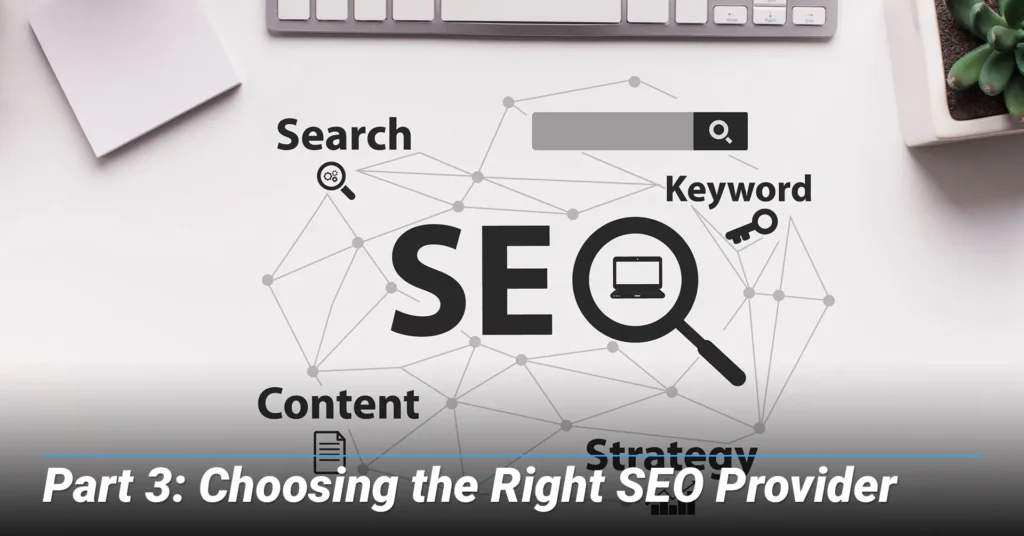
A. Why You Need an SEO (search engine optimization)/GEO (generative engine optimization) Provider
SEO/GEO is a complex, constantly evolving field that's crucial for achieving online visibility. For smaller businesses, the largest advantage against competitors is ranking on Google's first page. Few web design companies consistently deliver measurable SEO/GEO results. It requires specialized knowledge and constant adaptation due to evolving search engine algorithms and AI's expanding influence. Small to mid-size organizations typically lack internal SEO/GEO expertise, dedicated time, or professional tools. A qualified SEO provider has this knowledge and skillset, allowing you to focus on core business operations while ensuring optimized online presence for maximum visibility and organic traffic generation, maintaining a competitive advantage.
B. Key Considerations When Selecting an SEO/GEO Provider
Choosing the right SEO/GEO provider is absolutely crucial for success. A thorough selection process should include:
- Define SEO/GEO Goals: Clearly articulate specific objectives (e.g., increase organic visitors, achieve higher rankings for target keywords).
- Industry Experience: Select a company with proven experience in your industry or similar business sectors.
- Case Studies & Testimonials: Review documented past performance, focusing on measurable results and genuine client satisfaction.
- Client References: Contact previous clients directly for unfiltered insights into reliability and actual impact.
- Communication Style: Assess responsiveness, clarity, and genuine willingness to understand your unique business needs.
- Ethical Strategies: Ensure they exclusively use "white-hat" SEO/GEO (keyword research, quality content creation, credible backlink acquisition); avoid "black-hat" tactics that trigger penalties.
- Customized Solutions: Reject generic, cookie-cutter approaches; seek tailored strategies based on thorough industry analysis.
- Transparency & Reporting: Demand open discussion of strategies and regular, detailed performance reporting with clear metrics.
- Team Expertise: Inquire about the qualifications and diverse skill sets of the actual team members working on your account.
- Pricing Structure: Understand the pricing model completely, avoid hidden fees, and balance cost considerations with expected value delivery.
- Ownership of Assets: Ensure your contract explicitly states your complete ownership of website design and domain name to prevent potential asset hostage situations.
How Much Does Web Design Cost in 2025? The Ultimate Guide for Businesses
A website in 2025 is the equivalent of being in the Yellow Pages during the 2000s. Standard, expected, it serves as the cornerstone of one’s presence, providing information to consumers 24/7 even when their lights...C. Red Flags When Hiring an SEO/GEO Provider
Watch carefully for these red flags when evaluating SEO/GEO providers:
- Unrealistic Performance Promises: Avoid agencies guaranteeing specific rankings or traffic numbers; SEO/GEO success depends on a variety of factors. Google explicitly warns against such unrealistic claims.
- Meaningless Metrics Focus: Beware of providers focusing solely on rankings rather than leads or revenue generation. Legitimate agencies track meaningful business metrics through Google Analytics and Search Console.
- Generic Automated Audits: Mass-produced, automated audits represent a significant red flag. Authentic audits are manual, strategic, and completely customized.
- False Google Access Claims: Fraudulent claims of special Google relationships or insider access are completely unethical and false.
- Manipulative Link Practices: Avoid agencies using outdated or "black-hat" link-building tactics (e.g., private blog networks), which can result in severe penalties.
- Inexperienced Teams: Inquire about the actual team's experience level and employment status; watch for high turnover rates.
- Absence of Accountability: Demand a detailed work plan for the initial months. Lack of clear accountability from the start indicates potential problems.
- Poor/No Reviews: Check independent review platforms thoroughly. Few reviews or consistently negative feedback indicate potential client dissatisfaction.
Conclusion and Recommendations: An effective online presence is key for small to mid-size businesses and organizations seeking sustainable growth. Success requires integrating a comprehensive marketing strategy, a high-performing website, and a carefully selected SEO/GEO provider working in harmony.
By following these strategic recommendations, small to mid-size business owners and organizations can confidently navigate the complex digital landscape. Your online presence can become a powerful engine for steady growth, enhanced brand authority, and measurable returns on investment. The online journey is never-ending, requiring consistent effort, strategic adaptation, and unwavering commitment to excellence to remain competitive and connect effectively with your evolving audience.
Why a Responsive Website is Critical for Your Business in Today's Market
The internet has evolved from a one-room desktop at home or work to a portable, on-the-go browser able to connect anyone, anywhere, any time. Now, websites function as primary digital storefronts, often the first customer...Frequently Asked Questions about Finding a Good Online Marketing Agency
1. How much does a new website cost?
The cost of a new website varies based on a variety of factors and variables. It depends on design complexity, required special features (like e-commerce functionality or booking systems), and ongoing maintenance requirements. A basic, bare-bones website will naturally cost less than a complex site with extensive custom elements and advanced functionality.
2. How long does it take to build a website?
Website development timelines depend on project size, complexity level, custom work requirements, and how quickly you can provide content and feedback. Standard websites with just a few pages might be completed in several weeks, while a larger, more complex site could require several months or longer for proper development.
3. Will my website be mobile-friendly?
Absolutely! A modern website must be completely "mobile-responsive." This means it automatically adjusts the layout and content to display perfectly and function flawlessly on any screen size, whether smartphone, tablet, or desktop computer. This is essential because most people now browse the internet primarily on mobile devices. A professional web designer will always build and thoroughly test your site to ensure optimal mobile-friendly performance.
4. Do I own the site and its contents after it goes live?
This is a vital point that must be clearly specified in your contract with the web designer. Under copyright law, the person who creates the website (the designer) is typically considered the legal owner of the design and code unless there's a written agreement transferring those rights to you. Therefore, your contract should explicitly state that once you've made the final payment, you own all rights to the website's design, content, and domain name. This protects your investment and ensures complete control.
5. How long does it take to rank on Google's first page?
Achieving first page Google search results can vary dramatically based on many variable factors in play. It depends on how competitive your industry and target keywords are, the quality and relevance of your website's content, and the strength of your website's "backlinks" (links from other reputable websites). It's a continuous effort, and while some initial results might appear within a few months, reaching top positions for highly competitive terms often takes longer. Be extremely wary of any SEO/GEO provider who guarantees specific ranking results or timeframes, as many crucial factors remain outside their direct control.

Phong Nguyen
Phong brings the perfect combination of business acumen and technical expertise to digital marketing. Armed with a Bachelor of Arts degree from St. Olaf College, a master’s in business administration in Marketing from the University of St. Thomas, and SEO/GEO from “The School of Hard Knocks,” Phong founded ProWeb365.com in 2009 to help Minnesota businesses and non-profit organizations succeed online.
For over 15 years, Phong and his team’s strategic approach has combined data-driven marketing with conversion-focused design, delivering measurable results that directly impact his clients’ bottom line. Are you ready to experience what innovative digital marketing can do for your business in the age of AI search engines? Contact Us today!



